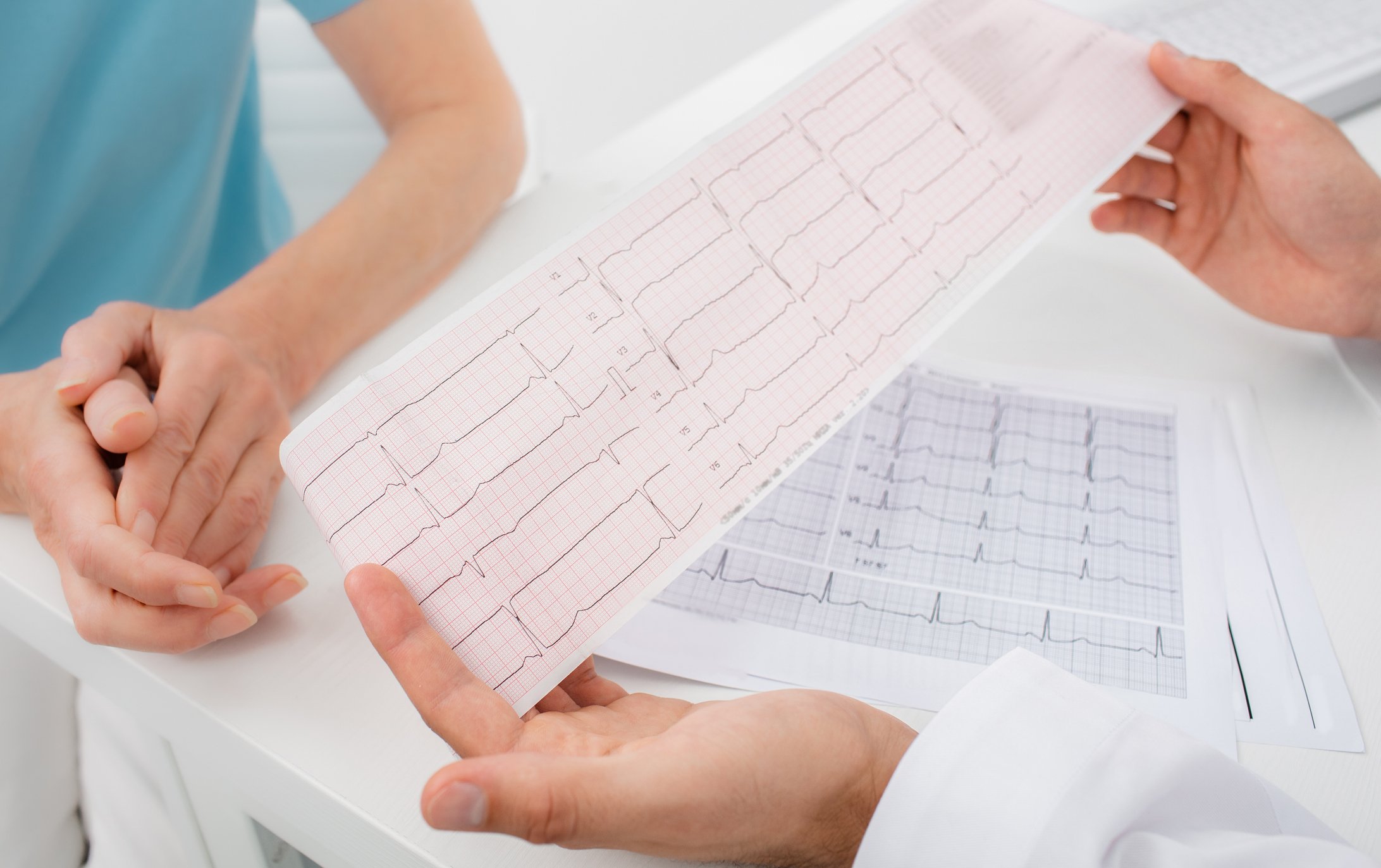
ECG tests for heart disease
The ECG (electrocardiogram) is a quick and painless test that gives information on the electrical function of the heart and heart rhythm. Longer recordings can be used to diagnose intemittent arrhythmias.
12-lead ECG
This is the basic ECG test, performed in a hospital or clinic. 11 stickers are attached to the chest, arms and legs and a recording made for 10 seconds, occasionally longer. The information recorded can diagnose problems with the heart rhythm, particularly the main electrical junction boxes of the heart, such as bradycardia (slow heart beat), atrial fibrillation other arrhythmias.
Sometimes the standard 12-lead ECG may be the only tests needed to find a problem. For other conditions, for example diseases of the heart muscle, the ECG might be suggestive, but further tests could be needed to confirm the problem.
Exercise ECG
In this test the patient is asked to exercise while an ECG is recorded using stickers attached to the chest, shoulders and hips. Usually exercise is carried out by walking or running on a treadmill, or by peddling a stationary bicycle.
Exercise ECG is used to find electrical problems that only occur with a high heart rate. For example, some conditions that require treatment with a pacemaker only become obvious when the heart rate is quite fast.
For patients with some medical conditions, the DVLA may require an exercise ECG to be undertaken before granting an HGV driving licence.
Holter monitor
This test involves wearing a heart rhythm monitor for a number of days and nights to detect intermittent heart rhythm problems. The Holter device includes a small computer attached to the chest with one or more short wires.
The Holter ECG is commonly used to diagnose paroxysmal atrial fibrillation.
The Holter device does have some drawbacks; it is relatively bulky and the stickers can come off overnight. It is generally not possible to shower or bath while wearing the monitor. For recordings over more than 5 days, another device may be more practical.
ECG patch monitors
Patch monitors have many of the same functions as Holter ECGs, but use miniturised recording equipment contained in one simple adhesive patch. This means patch ECGs can be recorded for longer than traditional Holters (up to 14 days). We use monitors from the Ziopatch and CardioStat ranges.
Patch monitors have a button for the wearer to “tag” when they feel unwell (dizziness, lightheadedness, or palpitations). This is particularly useful if we are trying to work out “symptom-rhythm correlation”, i.e. to find out what the heart rhythm is doing during specific symptoms.

